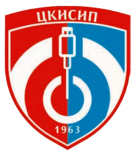Command Information Systems and IT Support Centre
The Command and Information Systems and IT Support Centre (CISISC) is an institution subordinated to the Communications and IT Department (J-6) of the Serbian Armed Forces General Staff with the purpose to development, implement, operate and protect information systems, command information systems, computer networks and the Internet.
CISISC performs the tasks related to analysis, design, implementation and usage of information systems, computer networks and the Internet. It is also in charge of monitoring current threats in the cyberspace and taking measures to eliminate them, as well as IT support for the Ministry of Defence (MoD) and the Serbian Armed Forces (SAF), in accordance with the prescribed hierarchical responsibilities of the IT administrative and executive organizations.
CISISC comprises IS Section, CIS Section, IT Section, Exploitation Section, Internet Subsection, Information Security And Cyber Defence Subsection and Operational Affairs and Training Section.
Colonel Milan Krtinić is the Head of the CISISC.
Tasks of the CISISC
CISISC performs the following tasks:
- Develop basic information systems;
- Develop software for command and information systems and geographical information systems;
- Develop, maintain and protect Internet services and the Command Computer Network (RAMKO) and provide user support for the MoD and the SAF;
- Support of the MoD and the SAF users concerning system software and information systems in operational use;
- Improve skills in the field of information security and cyber defence.
Background of the CISISC
As a result of the general need to improve the military administration and general administrative services, the 6th Department of the Yugoslav People’s Army General Staff was established on February 21, 1963. The Data Processing Centre was also subordinated to the 6th Department. That day, February 21, is celebrated in the SAF as the Day of IT Service.
The 6th Department (for administration) developed the system of administrative operations, organized and kept records and statistics in the YPA and managed the administrative service at the expert level. The first computer UNIVAC-1004 was acquired and installed late in 1964, and in 1968, the Electronic Computer ICL 4-50 was acquired.
At that time, the Data Processing Centre was working on the following tasks: streamlining the material records and accounting records; organization of the payment system; processing the active personnel list; establishment of unit files; classification of military personnel duties; processing the list of soldiers; statistical research plan; processing the list of motor and combat vehicles; personnel education issues; preparation and publication of translations etc.
Following the disbandment of the 6th Department of the Yugoslav People’s Army General Staff, two organization had emerged from it – 1) the Leadership Centre, which continued the work of the former Data Processing Centre as the expert body of the Yugoslav People’s Army General Staff for application of analytical methods and technical equipment in leadership processes, and at that time it was the central statistical body and expert body for the automated data processing system, and – 2) General Administration Section.
The IT and Administration Department was established on June 23 in 1975, from the former Leadership Centre of Yugoslav People’s Army, which was subordinated to the Chief of General Staff of Yugoslav People’s Army. On the same day, the Data Processing Centre was established, which was subordinated to the Head of IT and Administration Department.
The IT and Administration Department was reorganized on October 17, 1983, into the IT Department of the Yugoslav People’s Army General Staff. In 1983, the Administrative Service was renamed into the IT Service divided into two branches: IT and General Administration.
Up until the nineties, the IT development relied on mainframe computers (MRX, DPS6, DPS8) then the PCs were introduced, and in early 2000 the mainframe computers were completely decommissioned.
Contact Information
Address: 33 Kneza Miloša St., Belgrade
Phone: +381 (0) 11 3201-150
Fax: +381 (0) 11 3201-695
Email: milan.krtinic@vs.rs



